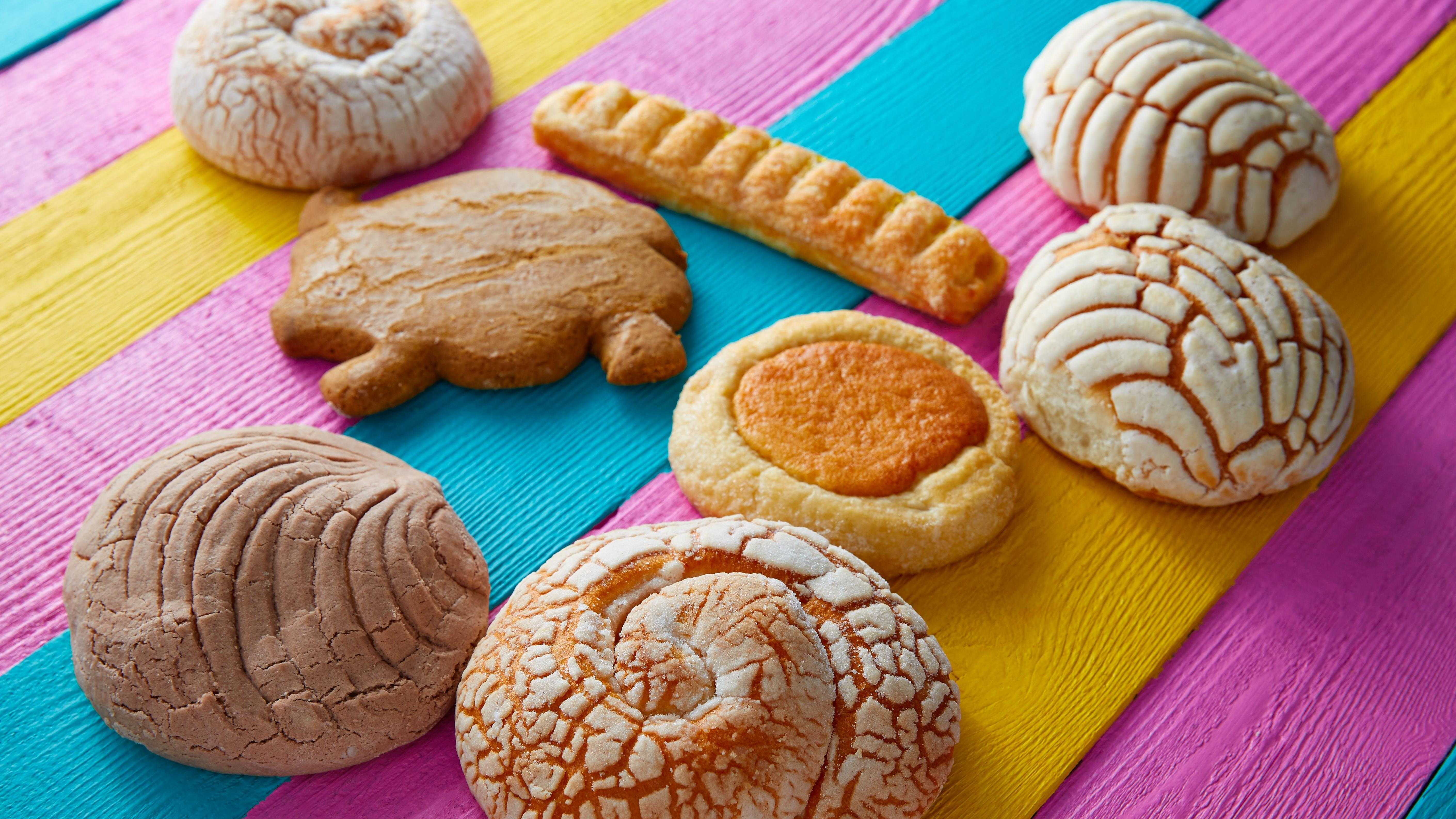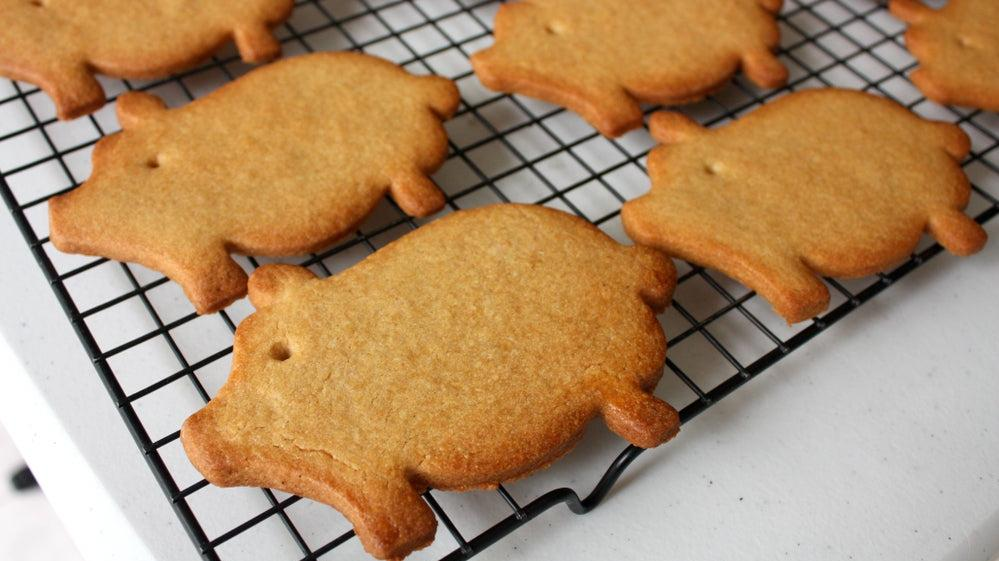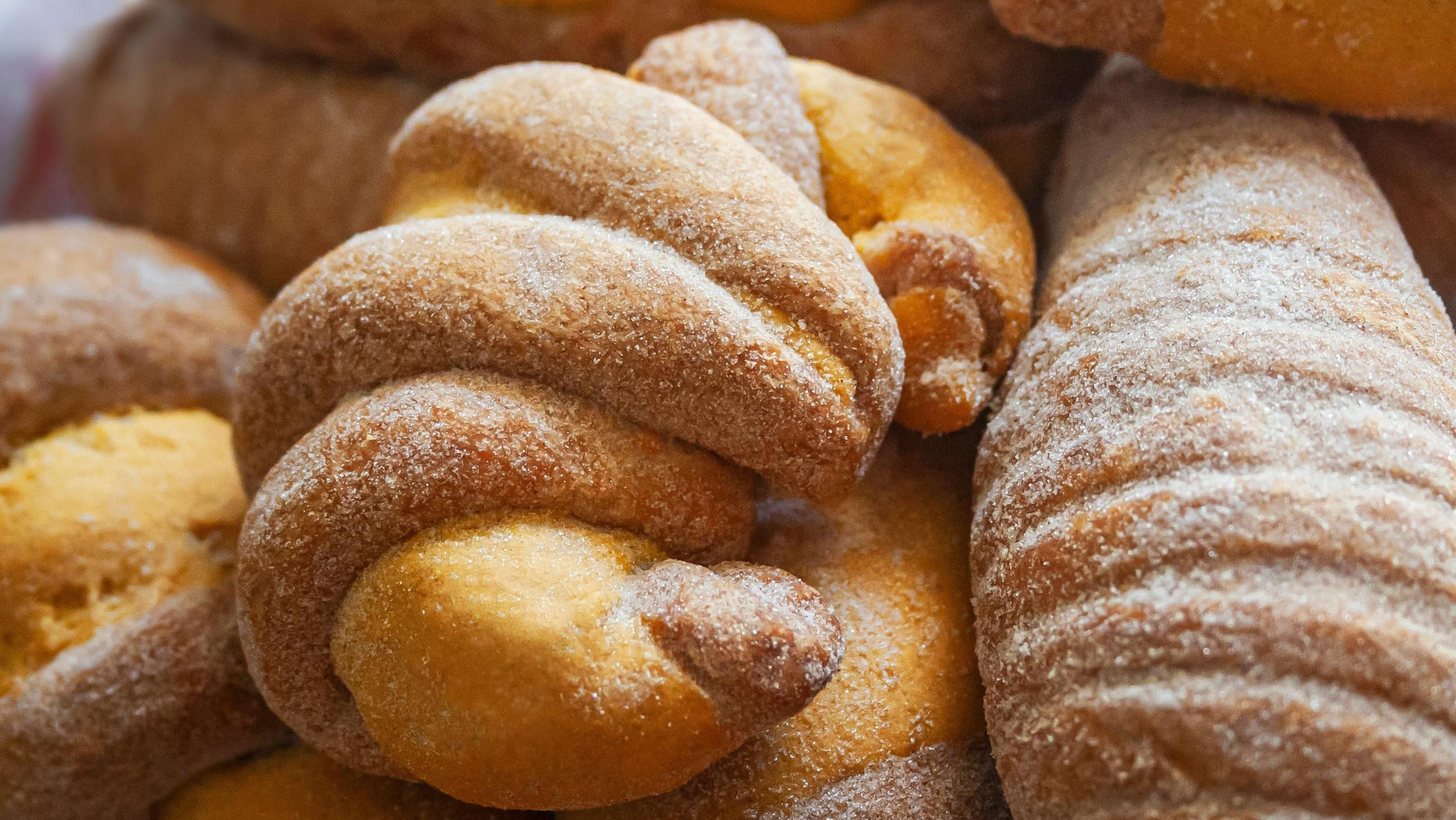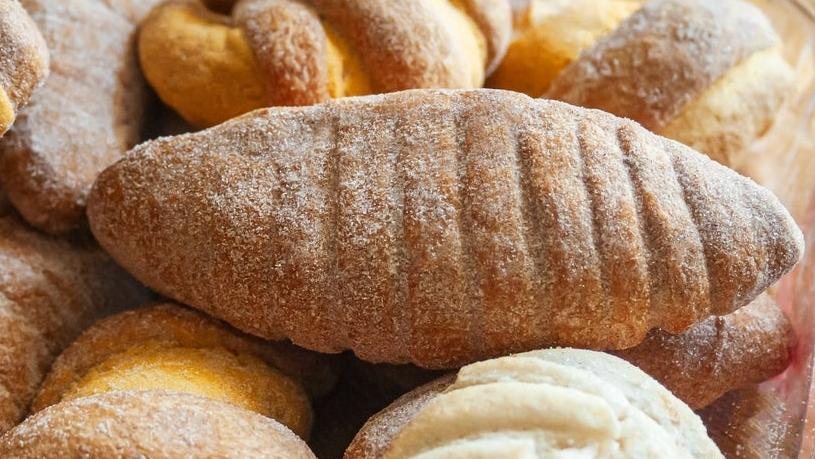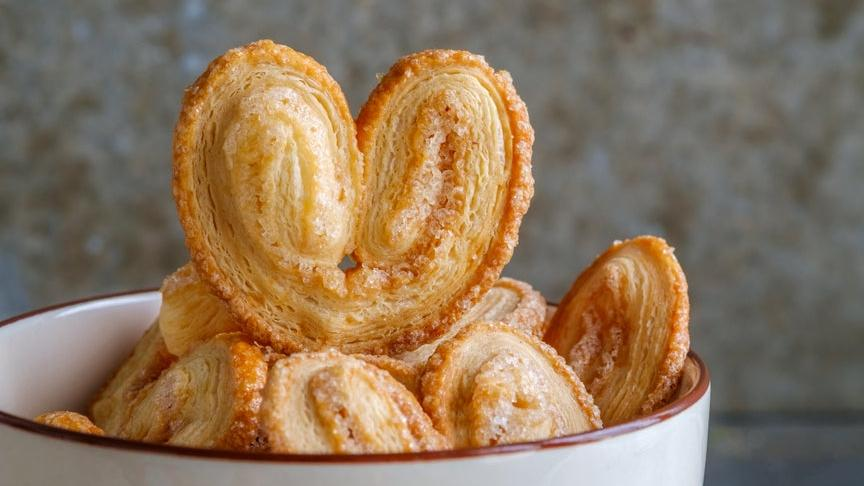You Need To Add These Mexican Pastries To Your Rotation
Here’s what you should buy when you take a trip to the panaderia.
Walking to the local panaderia with my grandpa for some pan dulce (Mexican sweet bread) was always one of my favorite parts of growing up. Back when I was too small to be trusted to juggle a pair of tongs, a silver platter, and open the door to a glass case all at the same time, he would have me just point to what I wanted. This meant my selections were based purely on whatever brightly colored treat attracted my little eyes.
To be clear, there are no bad choices when selecting your treat at the panaderia. However, I've learned over the years that some of the best selections are not the ones covered in sprinkles.
For those of you who weren't treated to the sweet sight (and smell) of these Mexican baked goods as a child, but want to get a taste of the good stuff now, here's a quick rundown of all the best selections your local panaderia has to offer.

Conchas
The chocolate concha reigns supreme and no one can convince me otherwise. It used to be the one and only piece of pan dulce that I ever reached for at the panaderia as soon as I was old enough to hold my own tongs.
The concha itself is pretty iconic; this light, airy sweet bread roll is usually the first image that comes to mind when people mention pan dulce. In Spanish, concha means "shell," which is why the delicious top is decorated in a seashell pattern. Conchas typically come in either vanilla, chocolate, or strawberry, and the flavors are easily identifiable because the tops are either colored white, brown, or pink.
Pro tip: If you have a day-old concha that's just a little stale, dunk it in your coffee or milk to soften it back up and enjoy.
Marranitos
The best part about a marranito is the name and shape. This isn't to say these little cinnamon spiced cookies aren't delicious (they definitely are), but the fact that they're pig-shaped adds to the fun.
Marranitos are actually known by many names, including cerditos and cochinitos, all of which refer to the fact that they are shaped like itty bitty piggies. The texture of a marranito is somewhere between cookie and bread roll, soft and chewy. Some panaderias might dust them with a bit of powdered sugar, but overall these cookies are best when they're kept as simple as possible.
Cuernitos
Cuernitos are a pan dulce I often saw my grandpa reach for to bring home to split with my grandma, who had a major sweet tooth. Their name, cuernitos, translates to "little horns," and they're comparable in shape to a croissant.
Cuernitos are flakier than most other pan dulce, and though they share the shape of a croissant, they are not quite as buttery. In fact, some might substitute lard for butter when making these little horns. Sometimes, cuernitos will also have a bit of color to them, such as a pink or yellow middle fold of dough. This is mostly for decorative purposes and doesn't change the actual sweet bread flavor of the cuernito, which is also most often dusted in sugar as well.
Gusano
Do not be put off by the translation of this one. Gusano means "worm" in Spanish, but I promise it has nothing to do with the ingredients. The gusano is another sugar-dusted, somewhat flaky pan dulce that earned its name because of its shape.
This baton-shaped sweet bread has earned this name because of its striped scoring, similar to the rings on a worm. Depending on the desired texture, a gusano could be on the dry, crumbly side or more bread-like and spiced with cinnamon. Gusanos are also sometimes filled with fruit jelly or cream. Though I'm not a huge fan of pan dulce filled with anything, the gooey center does add a little more variety to an otherwise straightforward recipe.
Orejas
Orejas once again earn their name because of their unique shape; in fact, it has inspired multiple names. Oreja translates to "ear," and the other names, abanico and palmera, translate to "fan" and "palm tree," all of which are fitting for this easily recognizable pan dulce.
Orejas are a little different from other pan dulces because they use puff pastry to achieve their buttery, flaky layers. Also, this is the only pan dulce whose origin can be traced to France instead of Mexico, where the pastry is called a palmier. Whatever you call it, this pan dulce is usually brushed with sugar and sometimes dipped in chocolate.
Like any other bakery, the panaderia also offers donuts (or donas), cookies, brownies, and cakes. But if you're not a panaderia regular, put down the brownie and take advantage of the specialties in this baked goods oasis. You can't find soft, chewy little piggies just anywhere.
